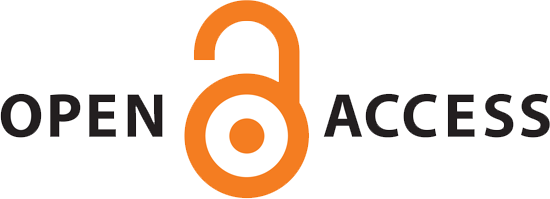Robust Neighborhood Confidence Interval and Width to Evaluate the Outcome of a Binary Random Variable of Unequal Cluster Sizes
Confidence interval Width for Unequal clusters
Abstract
Bachground :While the main advantage of the confidence interval is that it enables more precise evaluations when the risk for the outcome of interest is related to the cluster size, the predicted confidence interval width demonstrates the degree of variability in the future data instead.
Methods : We present a novel algorithm to create an intra‐cluster robust neighborhood confidence interval and width for each cluster to rank the widths from the narrowest to the widest width to determine each cluster's predicted variability and evaluate the corresponding observed values. An example was developed that assesses the finite‐sample behavior of this new method.
Results : Robust neighborhood intra-cluster predicted CI width was obtained for interpreting results of binary unequal sizes data. Narrow confidence intervals CI bounds suggest the results are not subjected to a high degree of random variations.
Conclusions: Intra-cluster predicted robust neighborhood CI and its corresponding width is a useful instrument in binary outcome unequal cluster sizes data as a method of analysis.
2 Zhan D, Xu L, Ouyang Y, Sawatzky R, Wong H . Methods for dealing with unequal cluster sizes in cluster randomized trials: A scoping review. PLoS ONE. 2021; 16(7): e0255389. https://doi.org/10.1371/journal.pone.0255389
3 Thompson JA, Leyrat C, Fielding KL, Hayes RJ. Cluster randomised trials with a binary outcome and a small number of clusters: comparison of individual and cluster level analysis method. BMC Med Res Methodol. 2022 ; 12: 22(1):222. doi: 10.1186/s12874-022- 01699-2. PMID: 35962318; PMCID: PMC9375419.
4 Murray DM, Varnell SP, Blitstein JL. Design and analysis of group-randomized trials: a review of recent methodological developments. Am J Public Health. 2004;94(3):423-32. doi: 10.2105/ajph.94.3.423. PMID: 14998806; PMCID: PMC1448268.
5 Rusticus, Shayna A. & Lovato, Chris Y. Impact of Sample Size and Variability on the Power and TypeI Error Rates of Equivalence Tests: A Simulation Study. Practical Assessment, Research & Evaluation. 2014; 19 (11). Available online: http://pareonline.net/getvn.asp?v=19&n=11
6 Eldridge SM, Ashby D, Kerry S. Sample size for cluster randomized trials: Effect of coefficient of variation of cluster size and analysis method. Int. J. Epidemiol. 2006;35(5):1292–1300. pmid:16943232
7 Braun TM. A mixed model formulation for designing cluster randomized trials with binary outcomes. Statistical Modelling. 2003;3(3):233–249.
8 Candel MJ, Van Breukelen GJ. Sample size adjustments for varying cluster sizes in cluster randomized trials with binary outcomes analyzed with second‐order pql mixed logistic regression. Stat. Med. 2010;29(14):1488–1501. pmid:20101669
9 Jung SH, Kang SH, Ahn C. Sample size calculations for clustered binary data. Stat. Med. 2001;20(13):1971–1982. pmid:11427953
10 Elaine B. Hoffman, Pranab K. Sen, Clarice R. Weinberg, Within‐cluster resampling, Biometrika, . 2001; 88(4): 1121–1134, https://doi.org/10.1093/biomet/88.4.1121 11 Durán Pacheco G, Hattendorf J, Colford JM Jr, Mäusezahl D, Smith T. Performance of analytical methods for overdispersed counts in cluster randomized trials: sample size, degree of clustering and imbalance. Stat Med.. 2009;28(24):2989-3011. doi: 10.1002/sim.3681. PMID: 19672840.
12 Kong S-H, Ahn CW, Jung S-H. Sample size calculation for dichotomous outcomes in cluster randomization trials with varying cluster size. Drug Inf. J. 2003;37(1):109–114.
13 Li J, Jung SH. Sample size calculation for cluster randomization trials with a time‐to‐event endpoint. Stat. Med. 2020;39(25):3608–3623. pmid:33463748
14 Kennedy‐Shaffer L, Hughes MD. Sample size estimation for stratified individual and cluster randomized trials with binary outcomes. Stat. Med. 2020;39(10):1489–1513. pmid:32003492
15 Taljaard M, Donner A, Klar N. Accounting for expected attrition in the planning of community intervention trials. Stat. Med. 2007;26(13):2615–2628. pmid:17068842
16 Raham, TF, Ali Al. Zubaidi H H, Olewi AO, Abddul-Fatah Al-Aboosi A A et al.. A Novel Algorithm for Predicting Antimicrobial Resistance in Unequal Groups of Bacterial Isolates. International Journal of Statistics in Medical Research. 2023 ;12, 226–232. https://doi.org/10.6000/1929-6029.2023.12.26
17 Kümmel A, Bonate PL, Dingemanse J, Krause A. Confidence and Prediction Intervals for Pharmacometric Models. CPT Pharmacometrics Syst Pharmacol. 2018;7(6):360-373. doi: 10.1002/psp4.12286. Epub 2018 Mar 25. PMID: 29388347; PMCID: PMC6027739.
18 Bevans R. (2023, June 22). Understanding Confidence Intervals | Easy Examples & Formulas. Scribbr. Retrieved December 8, 2023, from https://www.scribbr.com/statistics/confidence-interval/
19 Schuirman D J. A comparison of the two one-sided tests procedures and the power approach for assessing the equivalence of average bioavailability. Journal of Pharmacokinetics and Biopharmaceutics. 1987; 15: 657-680.
20 Blackwelder WC. Current issues in clinical equivalence trials. Journal of Dental Research. .2004; 83:pp113- 115.
21 Rogers JL, Howard, KI & Vessey, JT. Using significance tests to evaluate equivalence between two experimental groups. Pyschological Bulletin. 1993;113: 553-565.
22 Taylor, John Robert (1999). An Introduction to Error Analysis: The Study of Uncertainties in Physical Measurements. University Science Books. pp. 128–129. ISBN 0- 935702-75-X.
23 Hartnack, S., Roos, M. Teaching: confidence, prediction and tolerance intervals in scientific practice: a tutorial on binary variables. Emerg Themes Epidemiol ; 2021:18, 17. https://doi.org/10.1186/s12982-021-00108-1
24 Braschel MC, Svec I, Darlington GA, Donner A. A comparison of confidence interval methods for the intraclass correlation coefficient in community-based cluster randomization trials with a binary outcome. Clin Trials. 2016 Apr;13(2):180-7. doi: 10.1177/1740774515606377. Epub 2015 Sep 28. PMID: 26415500.
25 Alonso-Revenga JM. Martín N & Pardo L. New improved estimators for overdispersion in models with clustered multinomial data and unequal cluster sizes. Stat Comput 27, 193– 217 (2017). https://doi.org/10.1007/s11222-015-9616-z
26 Hossain A, ChakrabortyH. Facilitates Clustered Binary Data Generation, and Estimation of Intracluster Correlation Coefficient (ICC) for Binary Data.Version 1.1.1 . 2017.L https://cran.r-project.org/package=ICCbin
27 Ashley I Naimi, Brian W Whitcomb. Can Confidence Intervals Be Interpreted?, American Journal of Epidemiology. 2020; 189 (7):631–633. https://doi.org/10.1093/aje/kwaa004
| Files | ||
| Issue | Vol 11 No 1 (2025) | |
| Section | Articles | |
| DOI | https://doi.org/10.18502/jbe.v11i1.19321 | |
| Keywords | ||
| dichotomous binary variable robust neighborhood confidence interval confidence interval width unequal cluster sizes | ||
| Rights and permissions | |

|
This work is licensed under a Creative Commons Attribution-NonCommercial 4.0 International License. |



